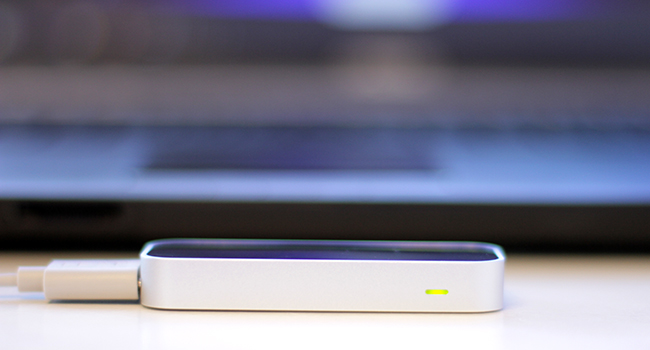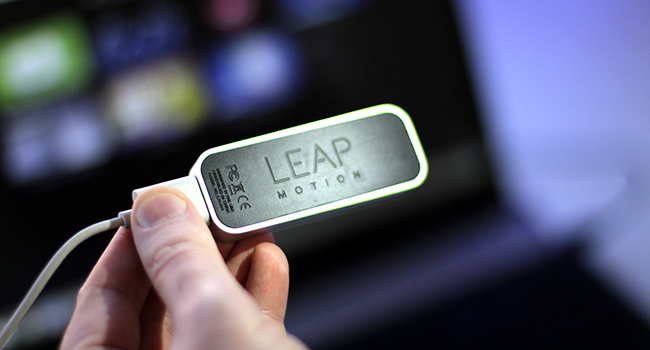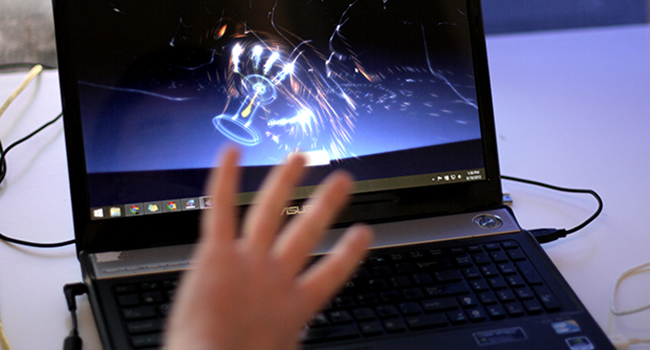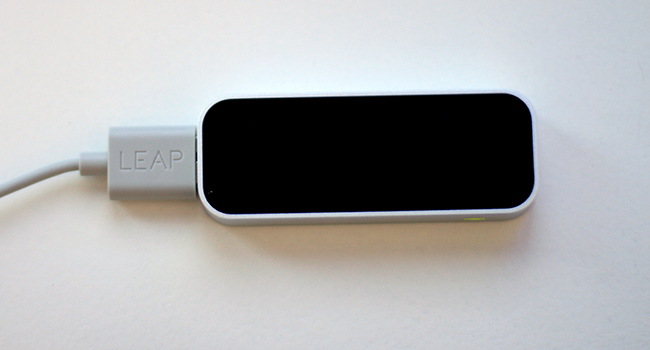OpenAI has launched GPT 5.2, a major model upgrade now available in both the API and ChatGPT. It is described as the company’s most…
Leap Motion review: 3D motion-controlled fun


Let’s get this out of the way quickly: Leap Motion, the 3D motion-based controller, isn’t going to replace the mouse right now. It’s a bold little toy, roughly the size of my thumb, is loaded with a highly accurate range of sensors and as of this very moment, won’t replace the traditional mouse in any way, shape or form. That’s what you were hoping for right? A Minority Report-style interface — all hands and no clicking, yeah boy. But that’s far from the truth.
Leap Motion’s controller is fun, but it lacks the feedback of a mouse. I had a great time with it, but it was always turned off unless I was showing my friends this new vision of the future. Gadgets like these take time to mature. Leap isn’t ready yet to rule our interfaces, but it definitely delivers a compelling experience of a future that’s not to far off. It’s also only US$79.99 so this piece of the future won’t break the bank.
It’s fun
The magic of Leap began almost instantly. I unboxed it, marveled at its tiny size, plugged it in and got right down to it. After a very brief installation, the Leap Orientation screen popped up and instantly detected my wrists and fingers. My friends gave it a shot, and Leap quickly picked up their hands as well. Leap can detect all eight fingers and both thumbs, wrist movement plus the depth of your hands. It’s quite something to see, and when it first happens you’ll feel genuine pleasure ripple up your spine as your movements are mirrored beautifully onscreen. I think for Leap to get this right it somehow made a deal with the devil (confirmation required).
There are a few apps to play around with (the paid for ones were a little too expensive for my taste) and most of them nicely demonstrate the capabilities of Leap. So that you’re aware, Leap isn’t going to magically replace mouse control, you’ll need to download a free app for that, called Touchless.

Now, Touchless is the only free app that let’s you control your computer as you would with a mouse. In theory, it works. In practice, it’s wildly inaccurate and half of the time you end up air-clicking the wrong thing. Moving the pointer with your finger is easy, you just wave your finger around and the Leap mouse icon moves with you, like a soap-bubble stuck to the end of your finger. Clicking is the hard part, as you need to stab the air to simulate a mouse click. Because our arms are on a hinge called the elbow, stabbing at the screen means that your mouse cursor will inevitably move a little lower when air-clicked.
But this ain’t the fault of Leap, it’s a software issue. When developers get their heads around this beautiful piece of tech, I have no doubt that better interface software will evolve. Until then, we’re having fun with Leap.
Fun comes in the form of two really interesting games. Cut the Rope and Dropchord. Both control very well, with a level of fluidity that Kinect struggles to attain. While Cut the Rope is well-known to millions (candy dangles from chord, you slice the rope to drop it into a monsters mouth), Dropchord isn’t and it’s the type of game that should be. It’s created by Double-Fine, is brand new and has found a natural home with Leap. With two fingers, you control an arc of light inside a sphere as you grab circles and dodge pointy things for points. It sounds great, looks even better and plays extremely well.

This is the beauty of Leap. I can wax lyrical about its small size and spooky finger-detection capabilities, but it only takes one app to truly show-off what Leap can do. Dropchord is one of them. Sadly there aren’t too many apps to get excited about, but we’ll discuss that later. As more games get Leap support, I expect to see shooters, strategy games, hell everything that uses a mouse for control to feature hands-free gestures that are not a gimmick but instead a much-needed feature. Imagine that your hand was the Gravity Gun in Half Life 2? You aim your open hand at the screen, beckon an object forward, grab it to hold and release to fling back. Goosebumps.
This is made possible with GameWAVE. With GameWAVE, you can assign different keys to whatever gesture you like. It’s very fiddly application and takes a lot of tweaking to get right (according to most of the reviews). It can also control the interface of your PC. Now, this is the type of app that should be free on Airspace but sadly it’s not. It costs US$3.99 and looks very enticing. Pity Leap didn’t scoop this up and include it as a value-add with its product. If anyone has a Leap and has purchased GameWAVE, let me know what your results are.
So it’s an incredibly fun gadget. 10/10? No, because right now Leap lacks the app that will make it replace the mouse. That app is still a twinkle in some developer’s eye and when they crack it, the Leap will become an indispensable device.
Properly designed
Leap is boxed well and is easily mistaken for an Apple product on first glance. There’s even a welcome card that beckons you into the crisp world of Leap Motion. Underneath this card is the Leap and it’s as unassuming as can be. It’s also a handsome gadget, with glass on top (sensor) and a rubber bottom with “Leap Motion” neatly etched into it. The rubber also helps to keep Leap in place.
Leap Motion was even kind enough to include a long and short USB 2.0 cord. The short one is good enough for all PCs, my suggestion is to move the USB connection to the back of the PC or the rear of the laptop, as any kink in the cord will needlessly shift the controller.

Once plugged in, installation is quick and fuss-free. You’ll be using Leap in seconds. Hardware requirements are also pretty low for Leap. All you need is a Windows 8/7 PC or a Mac running OS X 10.7 and above.
There are also a few control options to tweak, so if you prefer speed over accuracy, you can sway the Leap with a dive into the options menu. If Leap stops working, there’s a troubleshooting menu that will detect the Leap and try to correct any errors it has. The number one issue I had was a smudge on the cover, but Leap is quick to detect this. It’s embarrassing when a gadget tells you to “clean me” though. On the flip-side, this does make the Leap seem sentient.
What is this, BlackBerry World?
I’m serious. If you thought BlackBerry World was lacking apps, the AirSpace store is even worse. While the app store grows by the day, there’s not one single killer app that would make me recommend the Leap to a newbie.
For the PC, there were 71 apps in total. That’s it. I realise that Leap only recently debuted and is still but an embryo in the eyes of the tech elite, but less than 100 apps for now is a poor showing.

With some hesitation, I say that the Airspace store may perk up in a few months time but for now there’s slim pickings. It get’s even worse. If you want a free app for the PC, there’s only 19 to pick from. The free apps are a god waste of time, but you’ll be bored with them in a day or so. With the exception of Boom Ball (aim your finger and smash a ball into blocks), the free apps are simply there to wet your appetite for the paid ones.
Verdict: Leap is just that, a jump light-years ahead into an innovative controller that has sadly arrived too early to make any sort of real impact. While Leap is selling well, I doubt that anyone is raving about it enough to get their friends convinces. It’s a cool toy, with a poor app store and excellent motion recognition. Like a fine wine though, it needs time to mature until it’s ready to drink in the success.
Score: 7/10
I tested Leap on Windows 8.1, but it works on a Mac (OS X 10.7+) just as well

